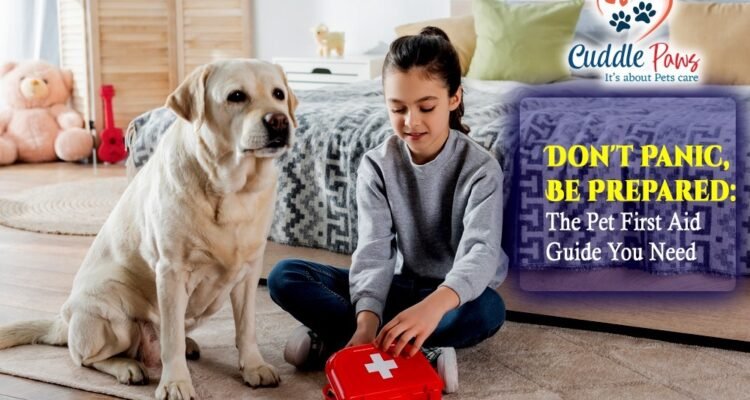Pets are family. They greet us at the door with wagging tails or content purrs, they comfort us on tough days, and they make every moment more joyful. But just like with any family member, emergencies can happen—and when they do, being prepared can make all the difference.
Whether you’re a new pet parent or a seasoned animal lover, knowing basic pet first aid can save your furry friend’s life. So take a deep breath (no panic allowed!) and let’s walk through everything you need to know to be ready when your pet needs you most.
Why Pet First Aid Matters:
Imagine this: your dog swallows something strange during a walk, or your cat suddenly has trouble breathing. In these critical moments, you may not have time to rush to the vet. Pet first aid gives you the power to act immediately and potentially stabilize your pet until professional help arrives.
Preparedness isn’t just peace of mind—it’s an act of love.
https://cuddlepaws.in/finding-the-perfect-pet-sitter-key-traits-to-look-for/
Your Essential Pet First Aid Kit:
Start by putting together a well-stocked pet first aid kit. Keep one at home and one in the car if you travel with your pet often. Here’s what it should include:
- Gauze rolls and non-stick bandages (for wrapping wounds)
- Digital thermometer (normal temperature for dogs and cats: 100–102.5°F)
- Tweezers (for splinters or ticks)
- Hydrogen peroxide (to induce vomiting — only when instructed by a vet)
- Antiseptic wipes and antibiotic ointment
- Scissors with blunt ends
- Saline solution (for flushing wounds or eyes)
- Muzzle (even the gentlest pets may bite when in pain)
- Emergency contact card with your vet’s number and nearest 24/7 clinic
https://www.avma.org/resources-tools/pet-owners/emergencycare/first-aid-tips-pet-owners
Common Emergencies and What To Do:
Choking:
Signs: Pawing at the mouth, gagging, difficulty breathing.
What to do: Carefully open your pet’s mouth and remove the object if it’s visible. Do not push it further in. If the object cannot be removed and your pet can’t breathe, perform a Heimlich-like maneuver. Ask your vet to show you how to do this safely ahead of time.
Bleeding:
Apply pressure with a clean cloth or gauze. Elevate the injured area if possible. If bleeding does not stop within five minutes, seek emergency care.
Poisoning:
Signs: Vomiting, drooling, tremors, seizures.
What to do: Call your vet or a pet poison control hotline immediately. Never attempt to treat poisoning without professional guidance.
Heatstroke:
Signs: Excessive panting, drooling, lethargy, vomiting.
What to do: Move your pet to a cool, shaded area. Offer small amounts of water. Use cool (not ice-cold) water to gently wet their body. Contact your vet right away.
Stay Calm, Stay Informed:
In any emergency, your calm presence is your pet’s greatest comfort. Speak in a soothing voice, move slowly, and do your best to reassure them.
Even better, consider taking a pet first aid course. Many are available online or through local animal shelters. The hands-on experience can make all the difference when seconds count.
Prevention Is the Best First Aid:
While you can’t prevent every accident, you can reduce the risks:
- Pet-proof your home to remove harmful foods, plants, and objects
- Use collars and leashes properly during walks
- Keep up with flea, tick, and heartworm prevention
- Visit the vet regularly for checkups
Final Thoughts:
No one wants to imagine their pet in distress, but being prepared is one of the most loving things you can do. Pet first aid is more than just a checklist—it’s a way of being ready, confident, and capable when your furry friend needs you the most.
So, don’t panic—be prepared. Because when it comes to our pets, every second counts.

